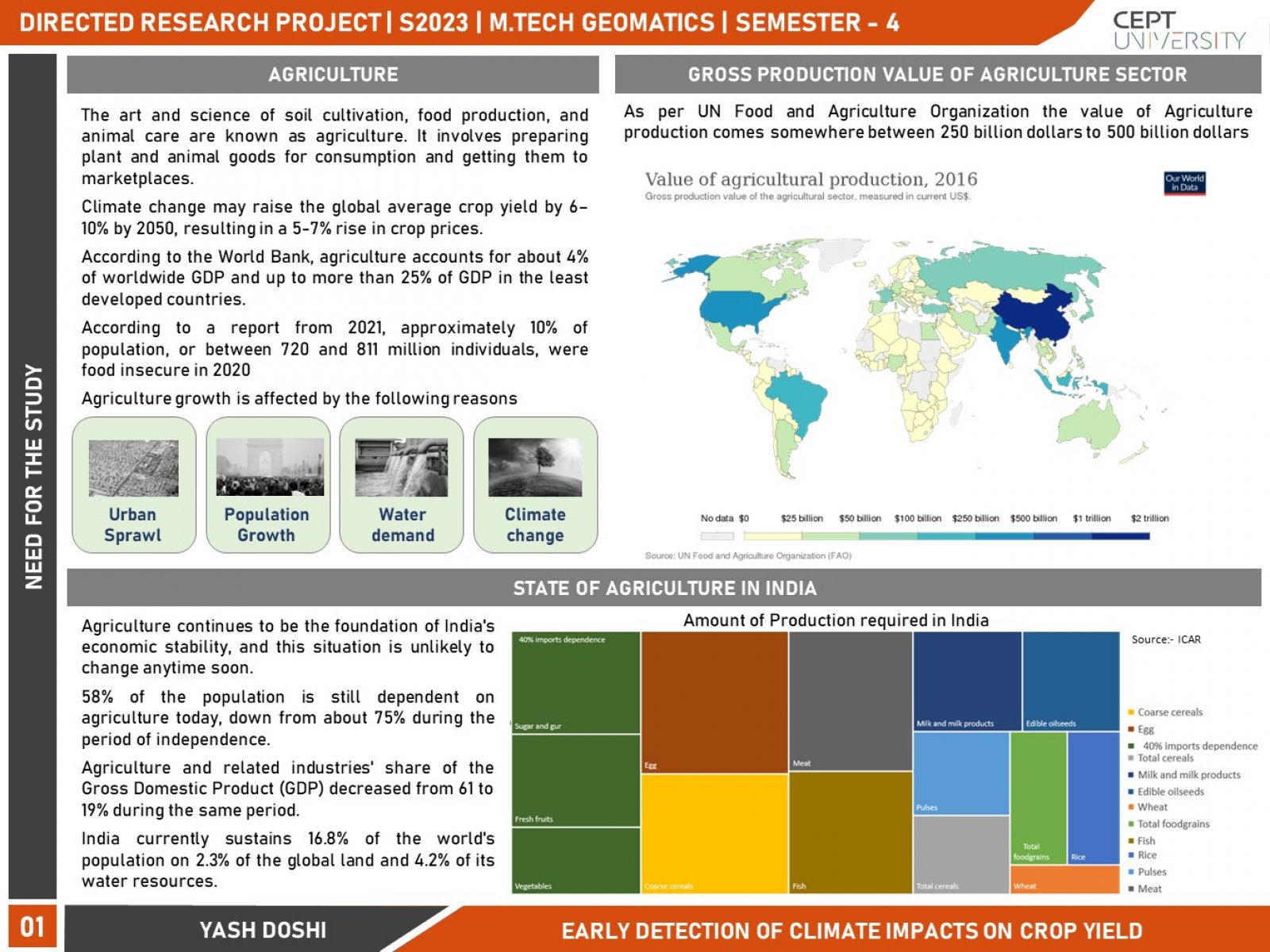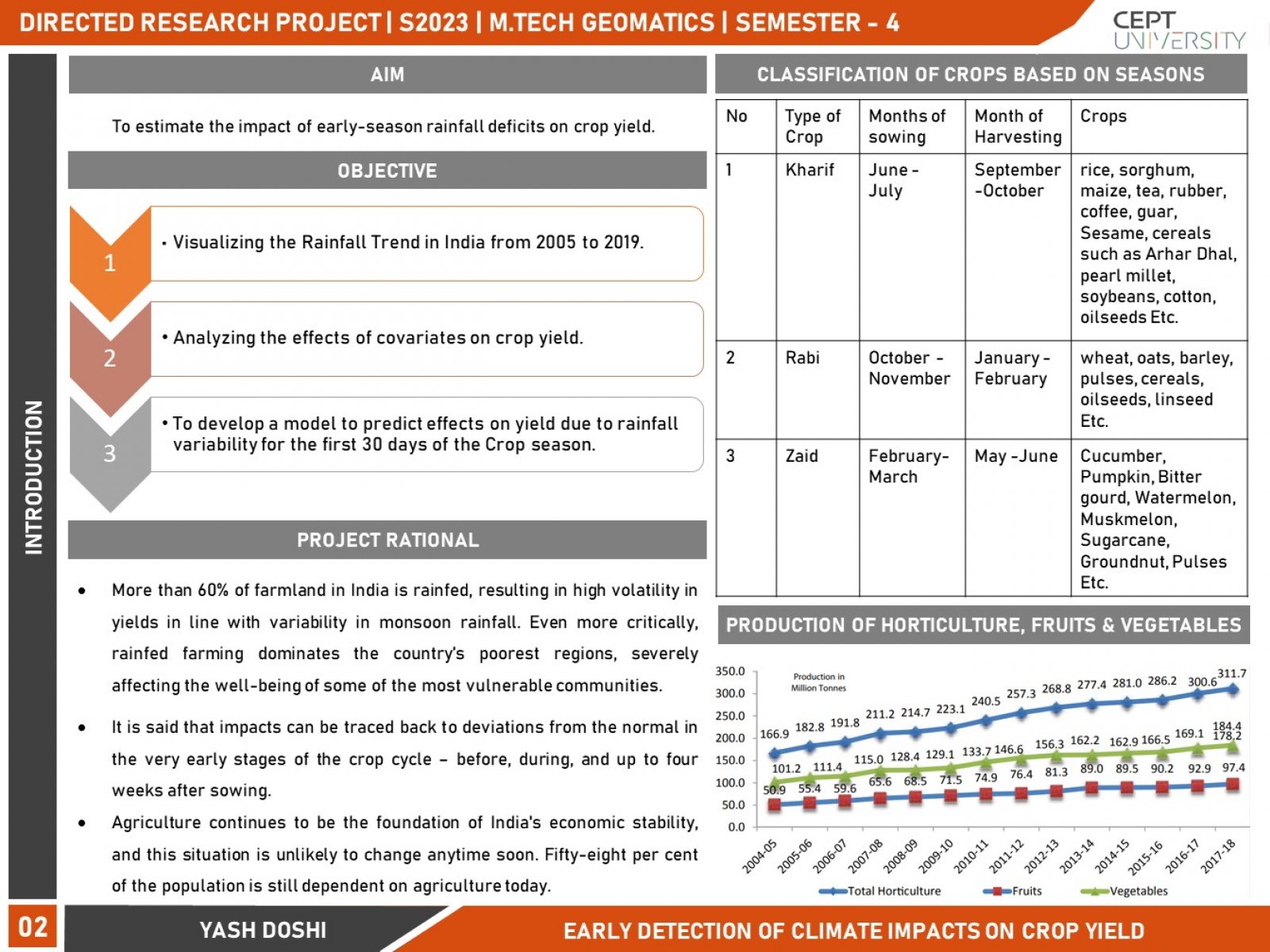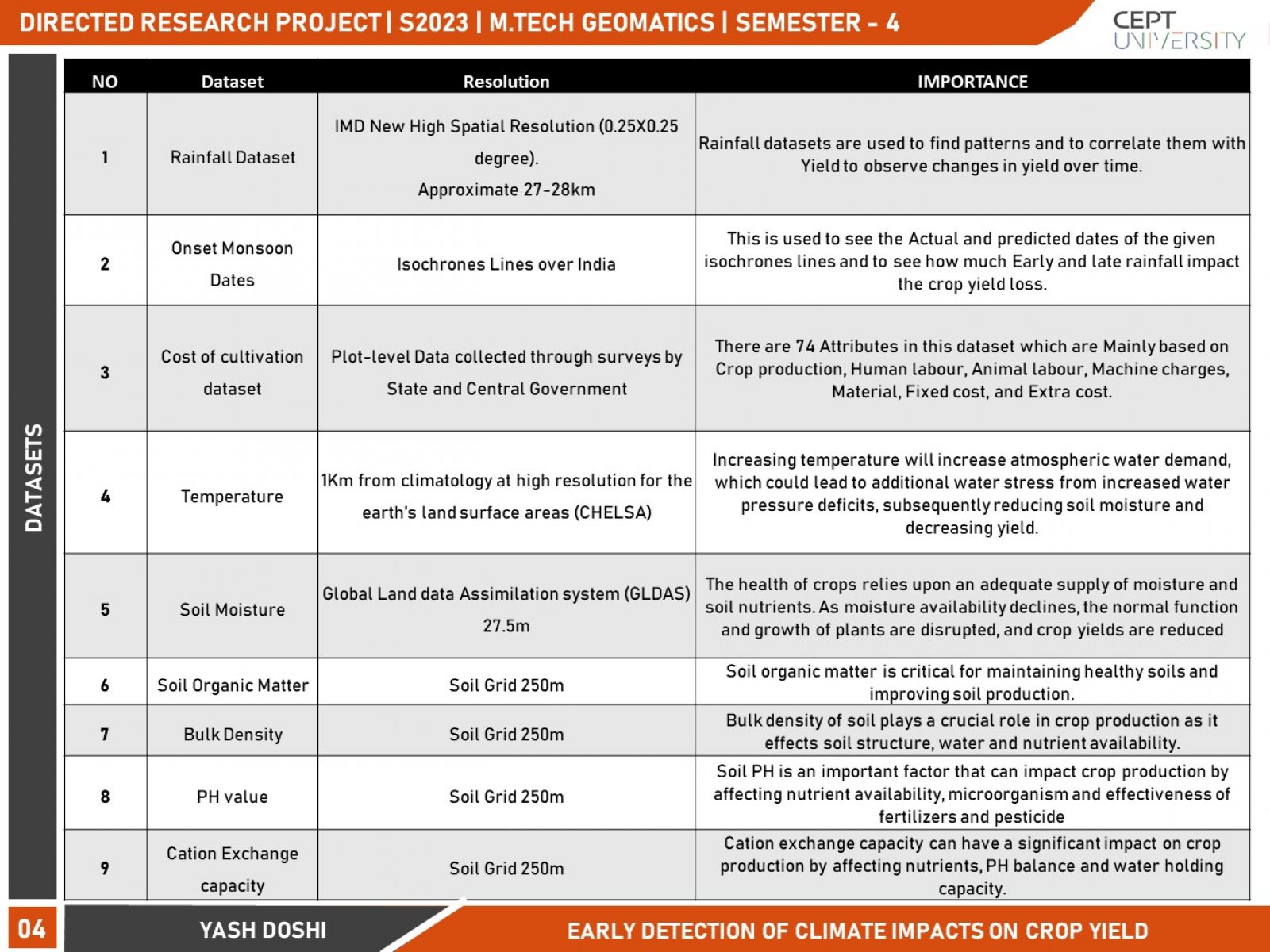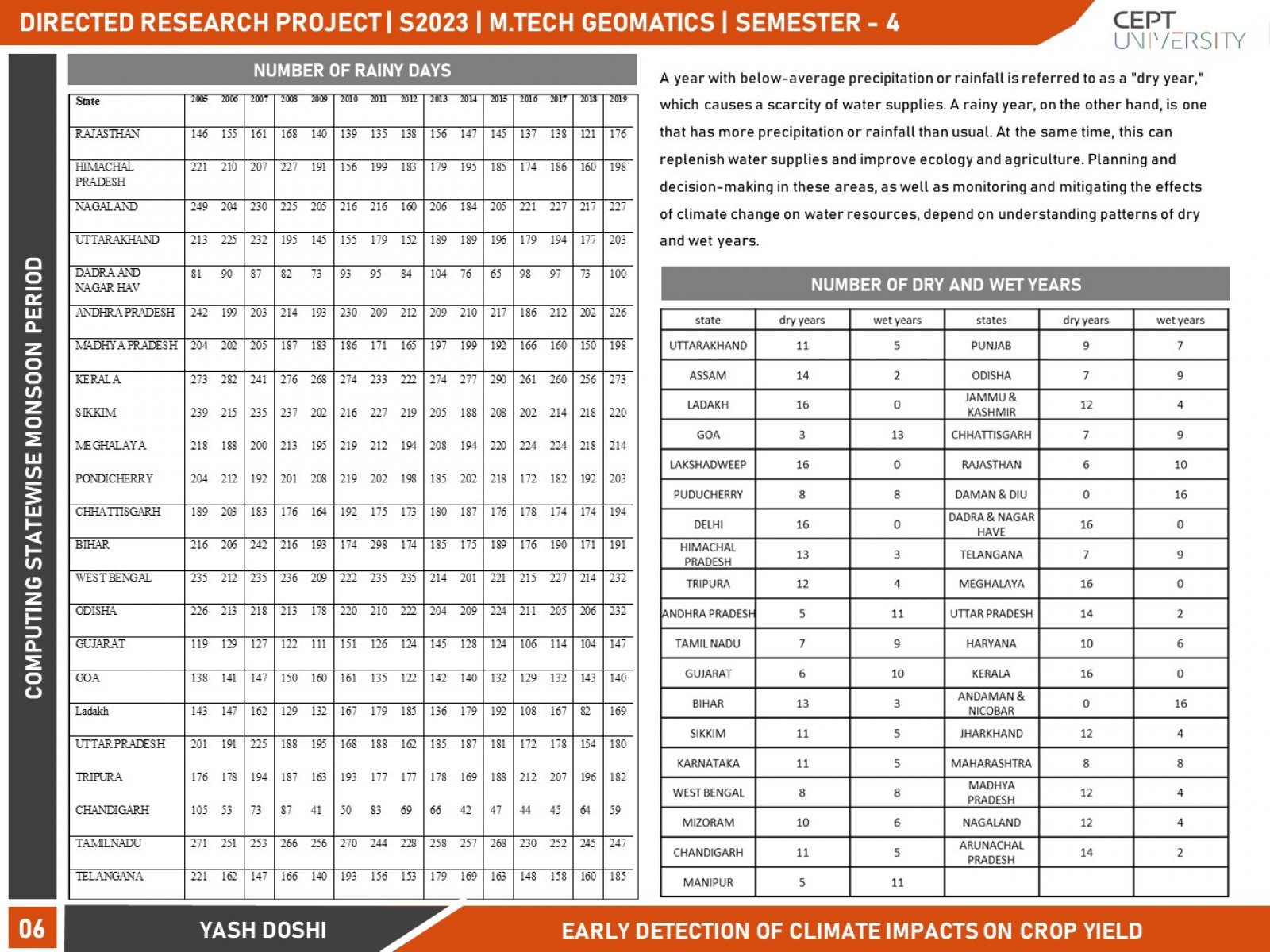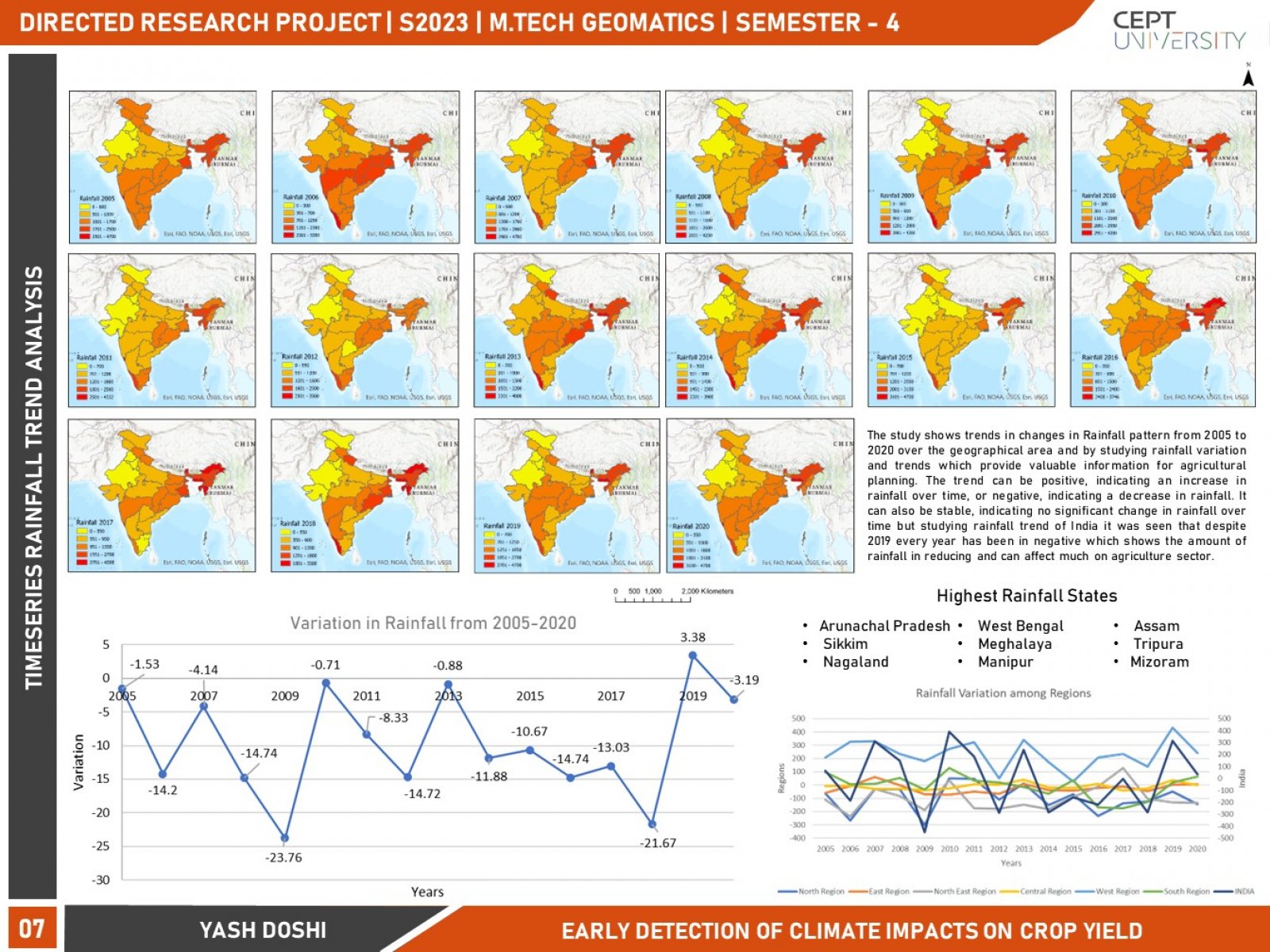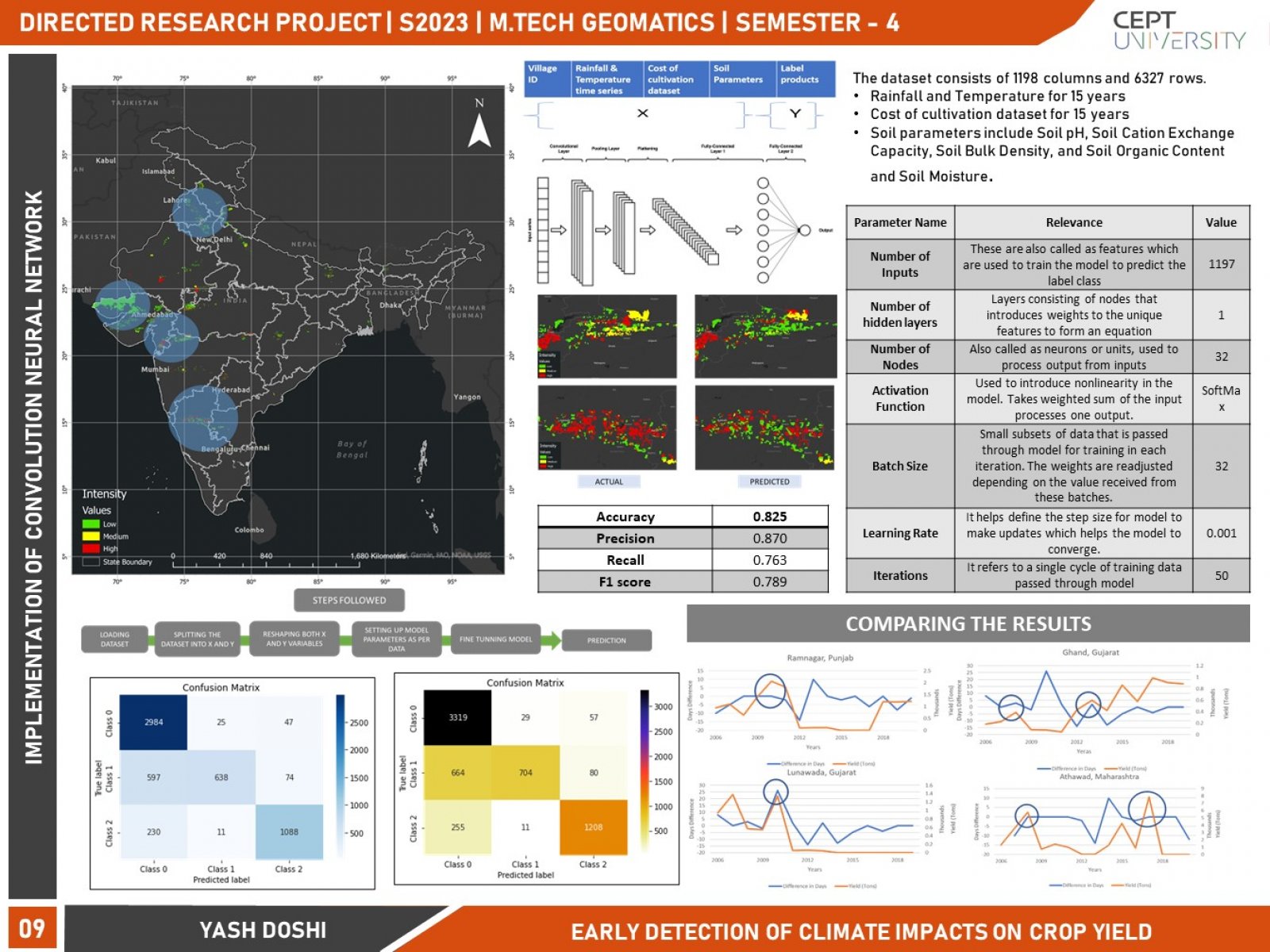Your browser is out-of-date!
For a richer surfing experience on our website, please update your browser. Update my browser now!
For a richer surfing experience on our website, please update your browser. Update my browser now!
Indian agriculture depends on the monsoon, providing most of the country's annual rainfall. About 60% of the net sown area in India is rain-fed, which means it relies on monsoon rainfall for crop production. The monsoon season typically lasts from June to September and provides about 70% of the total annual rainfall in India. There has been a much erratic rainfall pattern in recent years. Erratic rainfall is a phenomenon that refers to unpredictable variations in the timing, amount, and intensity of rainfall. It is a significant challenge for agriculture, as crops and livestock depend on consistent and reliable water availability for growth and productivity. This research uses an Advance onset of monsoon dates from 2006-2020 with Actual and normal dates of these years for villages over India. The training dataset is produced using the same plot-level data of major crops in India to estimate the impact of early-season rainfall deficits and a Convolution neural network model that is good at identifying relationships in temporal datasets to predict crop losses using rainfall data from the first 30 days of the crop season. The trend in rainfall shows that most of the years indicate negative trends despite the year 2019. Also, it has been observed that rainfall, temperature, soil moisture and soil type have significant effects on crop yield.
